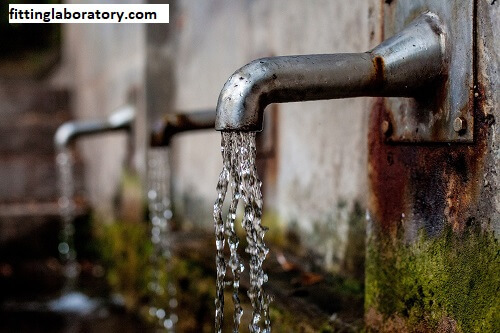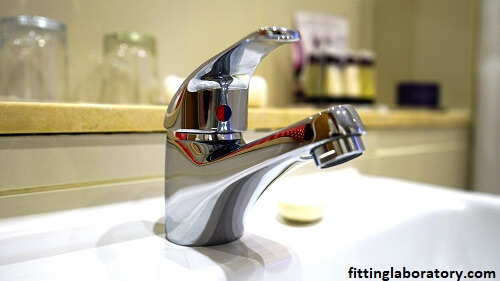Jic Fittings:
What are JIC Fittings and Why are they Important for Reliable Fluid Connections?
It is essential to choose the right fitting when a specific industry needs to transfer fluids in an efficient and leak-free way. One fitting that stands out among the rest is the JIC, or Joint Industry Council, fitting. This blog will discuss what JIC fittings are, the benefits they offer, some of the applications, and why they are widely used in hydraulic and pneumatic systems.

What Are JIC Fittings:
Jic Fittings:
Standardized hydraulic fittings by JIC have developed into the most recognized fitting across industries and come with a 37-degree flare design so that at installation and coupling with compatible tubing, this fitting guarantees a leak-proof and secure connection. The suitability of using is broadly represented since they are available in different variants of materials such as steel, stainless steel, and brass.
The JIC fitting system was designed in the United States to develop one common standard that ensures compatibility between many manufacturers, thereby improving efficiency in assembly and maintenance.
Primary Attributes of JIC Fittings:
Jic Fittings:
Design of flare: The 37-degree flare creates a mechanical lock that holds the fitting securely in place, reducing the chance of leaks. This allows for a higher pressure rating than any other style of fittings.
Material Versatility:
Jic Fittings:
JIC can be made from a host of materials, thus offering the advantages of corrosion protection, tensile strength, and temperature resistance. This flexibility enables them to be applied in different environments.
Easy Installation:
Jic Fittings:
The simplicity in design not only allows for easy putting in and out but also simplifies their application in systems that need frequent maintenance and changes.
Standardization:
Jic Fittings:
fittings are standardized, meaning they can be used interchangeably by various manufacturers. This reduces the complexity of procurement and minimizes the possibility of incompatibility.
Advantages of JIC Fittings:
Jic Fittings:
Leak Resistance:
The design of JIC lessens the possibility of leaks, which is quite crucial to the hydraulic system since small leaks can cause major losses and hazard safety.
High Pressure Ratings:
JIC fittings exhibit a high degree of resistance to pressure. This allows safe use in hydraulic systems, even those operating with high pressures.
Industries and Applications:
With such versatility, fittings are used in the automotive, aerospace, agricultural, manufacturing industries, etc. The above reasons make a preferred choice for engineers, as well as technicians.
Cost-Effective:
Though the initial investment for is a bit more than some rivals, the cost-effectiveness extends long since much time and effort is reduced in terms of cost spent on maintenance and replacement costs.
Applications of JIC Fittings:
Jic Fittings:
Hydraulic Systems:
In hydraulic applications, are widely used because they can withstand high pressures and allow leak-tight connections.
Apart from hydraulic, pneumatic systems also provide the means for using these fittings safely in transferring air and other gases.

Automotive:
JIC fittings are commonly applied in fuel lines, brake lines, hydraulic equipment, and the like components of an automobile that require reliability.
Industrial Machines and Equipment: Many industrial machines and equipment rely on to transfer fluid so that operation and maintenance can be carried out smoothly and efficiently.
Aerospace Applications:
Due to their performance and reliability, apply practically in aerospace where safety and precision are of utmost importance.
How to Select the Best JIC Fitting:
Jic Fittings:
The following are factors to be considered while selecting a JIC fitting for a project:
Size and Thread Type:
JIC fittings differ in size and type of thread. The fitting selected must suit the right size and type of thread used for the tubing or hose.
Material:
The fitting must be compatible with the environment in which it will be used. In cases of corrosive environments, stainless steel or brass fittings may be more suitable.
Pressure:
Ensure that the JIC you decide to use can handle the maximum pressure that your system is going to encounter.
Application Compatible:
Of course, various applications have different demands. Ensure that you consult the manufacturer’s specifications to ensure compatibility. Here are some tips on the installation of fittings.
Cleanliness: The fitting and mating surface must be cleaned before installation to prevent any form of contamination that leads to leakage.
Torque:
Torque torque is applied to get the necessary tightness as mentioned by the manufacturer. Over-tightening causes damage to the fitting while under-tightening leads to leakage.
Utilization of Seals:
Even a JIC fitting has an option of leak-tightness on its own; however, the use of seals or O-rings offers an extra level of protection in case of high-pressure applications.
Regular Inspection:
Inspect regularly for signs of wear or damage on fittings. This method can also avoid a system failure in the spur of the moment.

Conclusion: Reliable Fluid Connections:
Jic Fittings:
In a nutshell, JIC fittings can be said to be the backbone of fluid transfer systems in any industry. Their reliable performance and easy installation capabilities make them the favorite of both the engineer and technician. Whether it is hydraulics, pneumatics, or automotive, the application of JIC fittings contributes immensely to the efficiency and safety of your systems when the benefits of usage are understood. By choosing JIC fittings, you are investing in a solution that meets your immediate needs but provides long-term reliability for fluid connections.